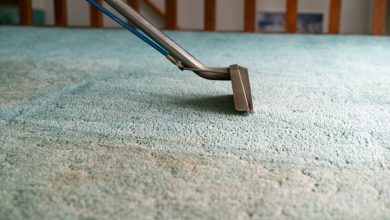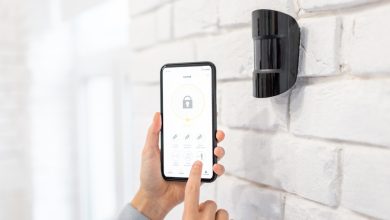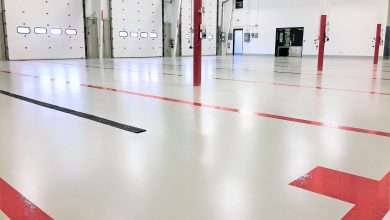How to Wire a Submersible Pump?

Are you scratching your head, wondering how to wire a submersible pump? If you need more time, fret not. Submersible pumps, your go-to devices for tasks like draining basements and supplying water, are invaluable. But, like any piece of hardware, they need some TLC, including proper wiring. In this guide, we’ll dive deep into the how-tos, the whys, and the what-not-to-dos because nobody wants to turn a simple wiring task into an electrical nightmare. So, how to wire a submersible pump? Let’s roll up our sleeves and get to it!
Why Proper Wiring is Crucial
Proper wiring is crucial when it comes to submersible pumps, ensuring not only efficient operation but also safety. In this guide, we’ll explore the importance of correct wiring and provide a step-by-step guide to help you get it right.
Longevity: The Fountain of Youth for Pumps
First things first. Proper wiring isn’t a nice-to-have; it’s a must-have. Imagine your pump as a race car. No matter how powerful the engine is, it will only win races if the wheels are wobbly. Likewise, sloppy wiring can put undue stress on your pump, causing it to overheat, become inefficient, and kick the bucket sooner rather than later.
Safety: Better Safe than Zapped!
Oh, we wish we were kidding, but the wrong wiring can lead to some shocking results—literally. We’re talking electrical shocks, fire hazards, and even complete pump meltdowns. So, as you learn to wire a submersible pump, think of it as installing an electrical bodyguard for your system and yourself.
Tools and Materials Required: Your DIY Treasure Chest
Ready for action? Not so fast, hotshot! Your toolkit should be as prepared as you are. Here’s your checklist:
- Wire strippers
- Electrical tape
- Screwdrivers (both flat-head and Phillips)
- Measuring tape
- Wire connectors or wire nuts
- Multimeter for testing electrical connections
- Safety gloves and goggles
- Silicone sealant for waterproofing
Understanding Your Pump’s Specifications:
The first rule of how to wire a pump is to know the pump. Familiarize yourself with these key specs:
- Horsepower (HP): Like a car’s engine, this indicates how powerful your pump is.
- Voltage (V): This reveals the pump’s power requirements. Common residential pumps often use 110V or 220V.
- Amps (A): This spec tells you how much electrical current the pump uses.
Your wiring needs to match these specs. If you mismatch, you’ll fry your pump, or it won’t work as intended.
A Brief on Electrical Codes: The Rulebook You Can’t Ignore
Rules aren’t fun, but sometimes they’re there to save our hides. So before becoming a weekend electrician, get to grips with local electrical codes. They outline what’s acceptable, what’s frowned upon, and what’s downright dangerous. It’s the law, folks. And if you’re uncomfortable with this, it’s best to ring up a certified pro.
Pre-Installation Checks: Better Safe than Sorry
Preparation is half the battle won. As you get ready to discover to wire a submersible pump, make these checks:
- Power Off: Always, and we mean always, disconnect the power. Safety should be your mantra.
- Pump Inspection: Check for anything that looks out of place, like dents, loose parts, or frayed wires.
- Test for Continuity: Use a multimeter to test if there’s a continuous electrical path in your pump’s wires.
Step-by-Step Guide to Wiring a Submersible Pump:
Navigating the intricate process of wiring a submersible pump can be challenging, but with our step-by-step guide, you’ll find it’s a manageable task. This expart guide will walk you through each essential step, making the wiring process easy and accessible, even for those with limited electrical experience.
Step 1: Wiring the Control Box: The Command Center
Your control box is the epicentre of all things electrical for your pump. Here, you’ll find labelled terminals like ground (usually green), run (red), start (yellow), and common (black).
- Open the control box and identify these terminals.
- Carefully connect the wires to their color-matching terminals.
- Tighten screws to secure wires.
- Add a dab of electrical grease for good measure to prevent corrosion.
Step 2: Dealing with Ground Wires: Planting the Anchor
Think of grounding as setting an anchor for your boat—it stabilizes the electrical currents and protects against erratic behaviour. Connect the green ground wire from the control box to the ground wire from your pump.
Step 3: Connecting Pump to Control Box: The Meet and Greet
The moment of truth: connecting your pump to the control box. It’s simpler than it sounds.
- Line up the colour-coded wires from the pump and control box.
- Twist the wires together and use wire connectors or nuts to secure them.
- Wrap each connection tightly with electrical tape to keep them isolated and safe.
Step 4: Waterproofing Connections: The Great Wall Against Water
Electricity and water are natural enemies. Ensure your connections are waterproof.
- Use a waterproof conduit to encase the wires.
- Apply silicone sealant around wire nuts, sealing them from potential water invasion.
Step 5: Testing: The Victory Lap
Your final step in learning wire a submersible pump is testing.
- Reconnect the power supply.
- Activate your pump for a short test cycle.
- Listen and watch for irregularities.
Troubleshooting Common Issues: Your First-Aid Kit
The Pump Doesn’t Start
- Double-check your electrical connections.
- Inspect the control box for signs of damage or faulty wiring.
The Pump Starts but Doesn’t Pump the Water
- Examine the water inlet and outlet for obstructions.
- Check the impeller, the part of the pump that moves the water.
Safety Reminders: Your Guardian Angels
Let’s go over it one more time for the folks in the back:
- Always disconnect the power.
- Always wear your safety gear.
- When in doubt, always consult a professional.
Conclusion
And there you have it! A thorough and detailed guide on how to wire a submersible pump from start to finish. Proper wiring sets the stage for smooth operation, longevity, and safety. So follow these steps carefully, keep the safety tips in mind, and you’ll find yourself in the league of submersible pump pros.



